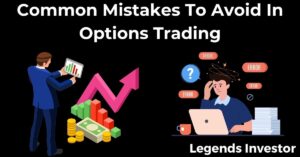Options trading, a bit like financial gym for the adventurous, opens the door to a world where you can speculate and hedge in the stock market way beyond just buying and selling shares. At its core, it gives you options (see what I did there?) with contracts that let you buy or sell assets at pre-agreed prices. Great power, great responsibility and all that!
Now, why bother with such a complex sport? Well, with risk can often come reward. Options trading, done right, lets you tap into potential gains without having to dish out the full price upfront. It’s like getting a front-row concert ticket for half the price-kind of magical, right? But this power isn’t without its pitfalls. The same magic that can work in your favor can flip on you. Greater profits appeal, but risks loom large too.
For anyone hoping to heroically navigate this tricky terrain, schooling up with solid reads can be life-saving. That’s why exploring options trading books, especially the great ones of 2025, is a must-do for anyone serious about playing this market game right!
The Importance of Education in Options Trading
In the fast-paced world of options trading, knowledge truly isn’t just key; it’s your entire arsenal. Picture this: each book you read is like another piece of armor that shields you from the slings and arrows of outrageous financial fortune. Without the right know-how, you’re pretty much like a knight charging into battle without a sword.
Learning all the ins and outs of options trading means you’ve got a better shot at sidestepping the pitfalls that can wipe out profits faster than you can say ‘bull market.’ Understanding the language of calls, puts, Greeks, and the rest can seem like learning an ancient dialect, but once you’ve got it down, it makes all the difference.
Staying on top of your game isn’t just for the rookies. For veterans, continual learning means keeping pace with ever-evolving markets and strategies. Plus, it ensures you’re tapping into the freshest data-essentially, you’re updating your trading software to the latest version each time.
Options trading education should cover diverse ground. Core principles like understanding market trends and analyzing risk, yes, but also exploring psychological aspects and economic indicators. A well-rounded education preps you for the roller-coaster ride of emotions that the market can unleash.
By eating up the right books and leaning into your learning, you equip yourself with a toolkit that helps you maximize gains and minimize losses. It’s less about turning the market into a magical money tree and more about being equipped for whatever the financial skies throw at you.
Book 1: “Options as a Strategic Investment” By Lawrence G. McMillan
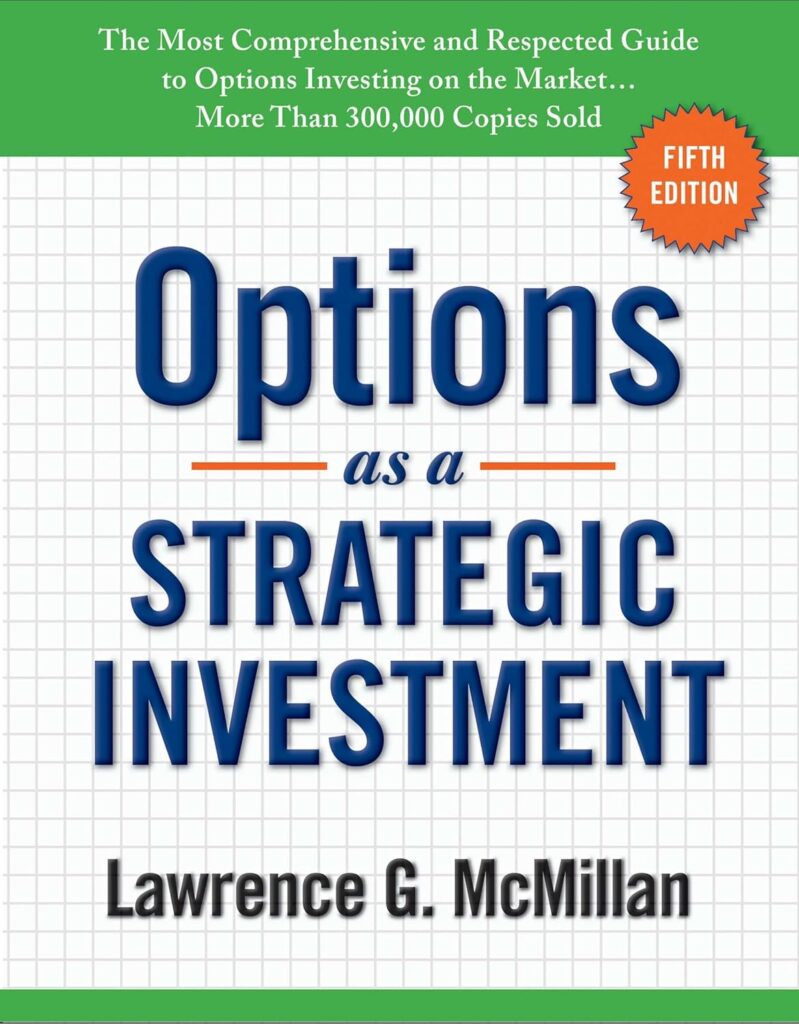
“Options as a Strategic Investment” by Lawrence G. McMillan is a comprehensive guide to options trading, widely regarded as a foundational resource for both novice and experienced investors. The book covers the fundamentals of options, including how they work, their risks, and their potential as a tool for strategic investment. McMillan explains complex concepts like option pricing, volatility, and various trading strategies (e.g., covered calls, spreads, straddles, and strangles) in a clear and detailed manner. It also delves into advanced topics such as hedging, risk management, and using options in different market conditions.
The book is praised for its depth, practical examples, and focus on real-world applications, making it a go-to reference for understanding options markets. However, its dense content and technical nature may be overwhelming for absolute beginners without a basic grasp of financial markets.
Thos book has been selling fast as it is great book of all time in options trading and sold over 3,00,000 copies already so don’t delay to check whether’s the book is available for you or not.
Book 2: “Option Volatility and Pricing” By Sheldon Natenberg
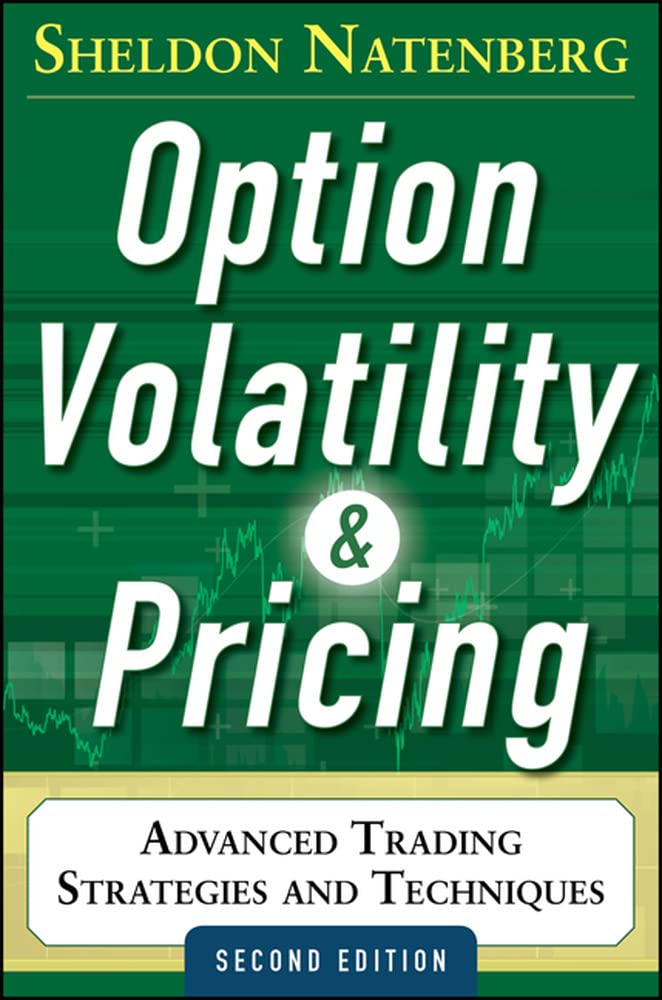
“Option Volatility & Pricing: Advanced Trading Strategies and Techniques” by Sheldon Natenberg is a seminal work in options trading, often considered a must-read for serious traders and professionals. The book provides an in-depth exploration of options, focusing on the critical role of volatility in pricing and trading strategies. Natenberg, a seasoned trader, breaks down complex concepts like implied volatility, historical volatility, and the Greeks (Delta, Gamma, Theta, Vega, Rho) in a clear, accessible way.
Key highlights include:
- Option Pricing Models: Detailed explanations of the Black-Scholes model and binomial models, with practical insights on their application.
- Volatility Analysis: Techniques for assessing and trading volatility, including how to anticipate market movements and manage risk.
- Trading Strategies: Covers a wide range of strategies, from basic calls and puts to advanced spreads, straddles, and combinations, with emphasis on risk-reward dynamics.
- Risk Management: Practical advice on hedging and adjusting positions to mitigate losses in various market conditions.
The book is praised for its rigorous yet practical approach, making it a favorite among professional traders, quants, and risk managers. However, its technical depth can be challenging for beginners without a foundational understanding of options.
If We are comparing it to Lawrence G. McMillan’s “Options as a Strategic Investment” (which I described you first ), Natenberg’s book is more focused on volatility and pricing theory, while McMillan’s is broader, covering a wider array of strategies and practical applications. Both are complementary for a well-rounded options education.
Book 3: “The Options Playbook” By Brian Overby
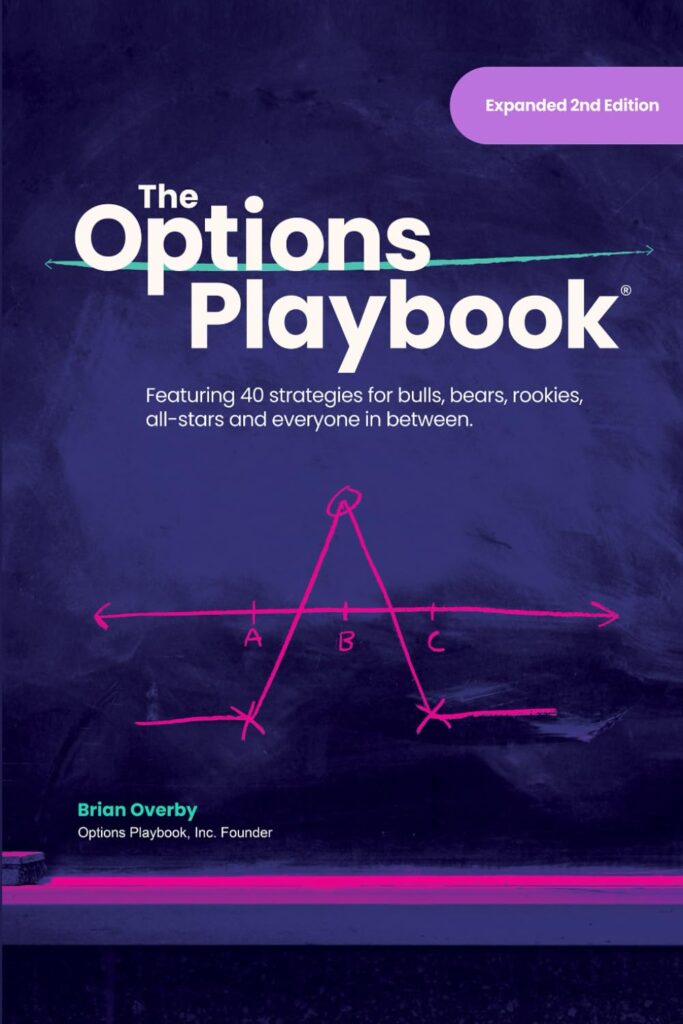
“The Options Playbook: Featuring 40 Strategies for Bulls, Bears, Rookies, All-Stars and Everyone in Between” by Brian Overby is a practical, user-friendly guide designed to demystify options trading for investors of all experience levels. Written by Brian Overby, a veteran options trader with over 30 years of experience and founder of Options Playbook Inc., the book breaks down complex concepts into clear, jargon-free explanations. It’s structured like a playbook, presenting over 40 popular option strategies in a concise, play-by-play format.
Key features include:
- Rookie’s Corner: A section tailored for beginners, covering basic definitions, concepts, and common mistakes to avoid, making it an accessible starting point for new traders.
- Strategy Breakdowns: Each of the 40+ strategies (e.g., Long Call, Short Call Spread, Iron Condor) is explained with:
- Play Name: The strategy’s name.
- The Setup: Goals and reasons for using the strategy.
- Who Should Run It: Whether it’s suited for rookies, veterans, or all-stars, based on complexity.
- When to Run It: Indicates if the strategy is best for bullish, bearish, or neutral markets.
- The Strategy: A detailed overview, including risks and costs, especially for multi-leg strategies.
- Options Guy Tips: Practical, real-world insights from Overby to bridge theory and practice.
- Advanced Topics: Expanded sections on implied volatility and the Greeks (Delta, Gamma, Theta, Vega) to help traders understand how options prices are affected by market conditions, time decay, and volatility changes.
- Risk Management: Guidance on setting profit targets, stop losses, and exit strategies to maintain discipline and avoid emotional trading decisions.
The expanded 2nd edition includes 10 new strategies and 56 additional pages, covering topics like the history of options, an expanded glossary, and managing positions. The book’s light-hearted tone, humor, and clear illustrations make it engaging, while its structured format serves as a quick reference for traders. It emphasizes that options involve risks and recommends reviewing “Characteristics and Risks of Standardized Options” before trading.
Book 4: “Options Made Easy” By Guy Cohen
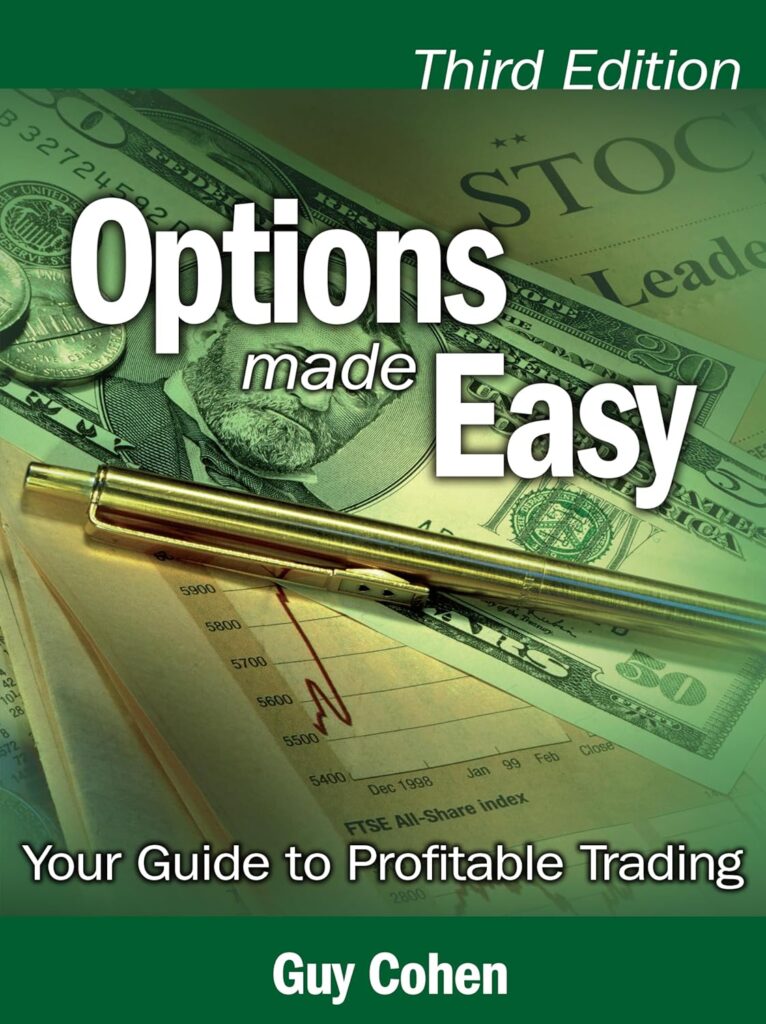
“Options Made Easy: Your Guide to Profitable Trading” by Guy Cohen is a beginner-friendly guide to options trading, renowned for its clear, visual, and interactive approach to explaining complex concepts. Now in its third edition (published April 2013), the book is designed to help novice and intermediate traders understand and profit from options in any market condition-bull, bear, or neutral. Cohen, an innovator in financial trading and creator of the patented OVI (Options Volatility Indicator), uses plain English, real-life examples, and extensive charts and diagrams to make options accessible.
Key Features:
- Simplified Learning: The book avoids complex math, focusing on practical knowledge through step-by-step tutorials, real trades, and clear illustrations. Cohen’s teaching style is interactive, often posing questions to engage readers and reinforce learning.
- OVI Indicator: A standout feature is Cohen’s proprietary OVI, which analyzes actual option transaction data to identify high-probability trades by revealing what savvy traders are doing. It’s presented as an easy-to-use tool for beginners to anticipate stock price movements.
- Core Strategies: Covers essential options strategies, including:
- Income Strategies: Covered calls and bull put spreads for steady returns.
- Volatility Trading: Straddles and strangles to capitalize on market swings.
- Rangebound Markets: Butterflies and condors for sideways markets.
- Trading Psychology: Emphasizes the importance of discipline, risk management, and understanding your risk profile to avoid common pitfalls.
- Practical Tools: Guides readers on filtering stocks, selecting strategies for specific situations, and creating effective trading plans. It also addresses myths about options and how to avoid costly mistakes.
- Updated Content: The third edition includes updated examples, new option symbols, streamlined chart patterns, and technical analyses, making it relevant to modern markets.
Structure and Content:
- Introduction to Options: Starts with basics like calls, puts, and risk profiles, using simple diagrams to build a strong foundation.
- Market Mechanics: Explains how options are priced (e.g., why a $2.50 option costs $250) and introduces fundamental and technical analysis.
- Strategy Application: Walks through implementing strategies with real examples, focusing on risk-reward dynamics and entry/exit timing.
- Trading Psychology: Discusses how to stay disciplined and avoid emotional decisions.
- OVI Focus: Introduces the OVI as a tool to spot opportunities others miss, with practical steps for its use.
Additional Details:
- Author Background: Cohen, with an MBA in finance from City University (Cass) Business School, London, developed the OVI and OptionEasy software after nearly failing his options exam, only to score over 80% by creating unique learning techniques. His user-friendly approach stems from this experience.
- Book Specs: 350 pages (third edition), published by FT Press, ISBN-13: 978-0133087895, dimensions 9.49 x 7.38 x 0.97 inches.
- Availability: Available in hardcover, eBook ($37.99), and other formats via retailers like Amazon, Barnes & Noble, and O’Reilly.
- Critiques: Praised for its clarity, visuals, and OVI insights, but some readers note it may oversimplify advanced topics or focus heavily on the OVI, which requires additional tools for practical use.
Why It’s Valuable:
The book is ideal for beginners and intermediates seeking a practical, jargon-free guide to options trading. Its visual approach and emphasis on real trades make it engaging, while the OVI offers a unique edge for spotting market opportunities. Cohen’s focus on risk management and psychology helps traders build confidence and avoid common errors.
Book 5: “Understanding Options” By Michael Sincere

“Understanding Options” by Michael Sincere is a beginner-friendly guide to options trading, designed to make the complex world of options accessible to novice investors. Published by McGraw-Hill, with its second edition released in 2014 and a third edition noted in some sources, the book has sold over 100,000 copies, earning praise for its clear, jargon-free style. Sincere, a financial columnist for MarketWatch and author of several investment books, aims to educate readers on using options to generate income, hedge, speculate, and protect stock positions while emphasizing risk management.
Key Features:
- Beginner-Oriented Approach: Written specifically for novices, the book avoids complex mathematics and uses simple language, analogies, and step-by-step explanations to demystify options trading. It’s structured to build a solid foundation, making it ideal for those with little to no prior knowledge.
- Core Strategies: Focuses on four basic option trades:
- Covered Calls: Selling calls to generate income, recommended as the safest starting point for beginners.
- Buying Calls: Speculating on stock price increases with limited risk.
- Buying Puts: Betting on price declines or protecting portfolios.
- Selling Puts: Generating income with cash-secured puts.
- Advanced Strategies: Covers intermediate and advanced techniques, including:
- Protective and married puts, collars, credit and debit spreads, straddles, strangles, iron condors, calendar spreads, butterfly spreads, LEAPS, Weeklys, and mini-options.
- Explains how these strategies work in bullish, bearish, or neutral markets.
- Key Concepts: Introduces critical topics like:
- The Greeks: Delta, Gamma, Theta, Vega, and their role in option pricing.
- Volatility: Understanding implied and historical volatility.
- Assignment Anxiety: Tips for overcoming fears of option assignment.
- Risk Management: Emphasizes trading small, setting loss limits, and avoiding excessive risk to differentiate trading from gambling.
- Practical Guidance: Includes a step-by-step walk-through of placing an order, profit and loss scenarios for simple options and spreads, and insights from professional traders like Sheldon Natenberg (interviewed in the book).
- Updated Content: The second and third editions include new material on ETFs, mini-options, and strategies to navigate volatile markets, along with updated charts, figures, and facts.
Structure:
- Part 1: What You Need to Know First: Covers option basics, terminology, and market mechanics.
- Part 2: Selling Covered Calls: Details how to generate income safely.
- Part 3: Buying Calls: Explains speculative strategies with calls.
- Part 4: Buying Puts: Focuses on puts for speculation or protection.
- Part 5: Advanced Options Strategies: Introduces complex strategies like spreads and straddles.
- Part 6: Uncommon Advice: Offers practical tips, including risk management and trader psychology.
- Additional Features: Includes an interview with Sheldon Natenberg, a glossary, and resources for further learning.
Additional Details:
- Author Background: Michael Sincere is a freelance writer, MarketWatch columnist (“The Long-Term Trader”), and author of bestsellers like “Understanding Stocks” and “How to Sell Covered Calls.” He’s been featured on CNBC, ABC’s “World News Now,” and various radio programs.
- Book Specs: The second edition (2014) is 295 pages, ISBN: 9780071817844. Available in paperback, Kindle ($14.99), and audiobook (narrated by David Stifel).
- Reception: Praised for its simplicity, engaging style, and actionable advice, with readers appreciating its clarity for beginners. Some criticize its repetitive sections on trade execution (outdated due to modern brokerage platforms) and find advanced strategies like straddles and iron condors confusing or tedious without enough numerical examples. It’s rated 4.4/5 on Apple Books (41 ratings) and highly recommended on platforms like Reddit for its straightforwardness.
- Use Cases: Helps with Series 7 exam preparation, provides a foundation for options trading, and encourages disciplined, low-risk approaches.
Why It’s Valuable:
Sincere’s book stands out for its accessible, conversational tone and focus on practical, low-risk strategies like covered calls, making it ideal for beginners. It combines history, fundamentals, and personal anecdotes to create an engaging learning experience. The emphasis on risk management and avoiding speculative pitfalls resonates with cautious investors, while the inclusion of advanced strategies offers a pathway for growth. However, readers seeking in-depth mathematical analysis or advanced trading techniques may need to supplement with other texts.
Book 6: “Dynamic Hedging” By Nassim Nicholas Taleb
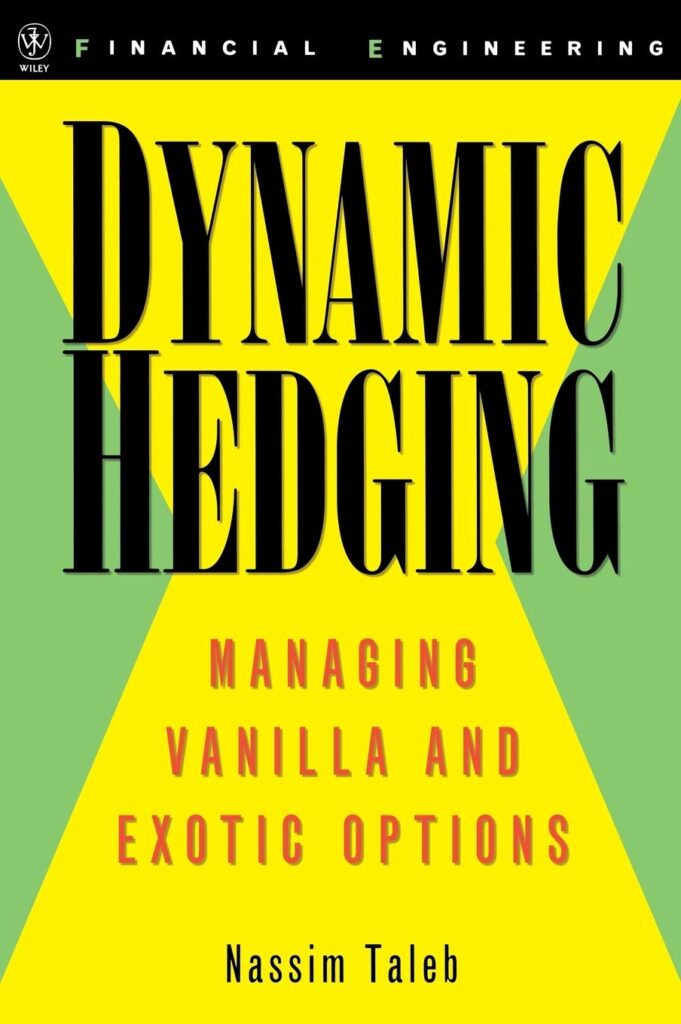
“Dynamic Hedging: Managing Vanilla and Exotic Options” by Nassim Nicholas Taleb is a seminal work on derivatives risk management, widely regarded as a definitive resource for professional traders and risk managers. Published in 1997 by Wiley, this 528-page hardcover book (ISBN: 9780471152804) targets the real-world needs of options traders, market makers, and portfolio managers, offering a practical methodology for managing risks associated with vanilla and exotic options. Taleb, a former options trader, hedge fund manager, and founder of Empirica Capital LLC, brings his extensive trading experience and academic background (MBA from Wharton, Ph.D. from University Paris-Dauphine) to provide a unique blend of theoretical rigor and practical insight.
Key Features:
- Focus on Risk Management: Unlike books aimed at corporate treasurers, this text focuses on the needs of professional traders, emphasizing preventive risk management to avoid catastrophic losses in derivatives trading. It addresses the risks of complex and exotic options contracts, which promise high profits but carry significant downside potential.
- Real-World Methodology: Taleb presents a practical framework for monitoring and managing portfolio risks, written from the perspective of an option market maker and arbitrage operator. It covers both on-model risks (captured by mathematical models) and off-model risks (those not easily quantified), remolding option theory to fit real-world trading environments.
- Core Topics:
- Generalized Options: Discusses instruments with convex payoffs, including trader bonuses, and their implications for risk.
- Exotic Options: Covers trading techniques for binary, barrier, multi-asset, and Asian options, addressing non-bell-shaped distribution challenges.
- Volatility and Greeks: Explores implied and historical volatility, delta hedging at discrete intervals (noting that continuous hedging is impractical), and the behavior of Greek sensitivities (Delta, Gamma, Theta, Vega) in real options books.
- Practical Insights: Includes concepts like “delta bleed” and back-booking far out-of-the-money options, offering actionable strategies for volatility traders.
- Skeptical Approach: Taleb challenges conventional financial models (e.g., Value at Risk, continuous hedging), highlighting their limitations when markets deviate from theoretical assumptions. He prioritizes practical trading over rigid adherence to models, a perspective validated by the 1998 financial market debacles.
- Dense but Insightful: The book is information-dense, with a disjointed structure that jumps between topics (options, volatility, exotics). Each chapter is packed with insights, often requiring multiple readings to fully grasp the nuances.
Reception and Critiques:
- Praise:
- Victor Niederhoffer (Chairman, Niederhoffer Investments) calls it a “tour de force” of great practical and theoretical value, with each chapter “worth a fortune” to derivatives traders.
- Stan Jonas (FIMAT-Société Générale) notes it bridges the gap between what traders know and what scholars can prove.
- Reviewers on Goodreads and ThriftBooks highlight its value as a reference guide, with one trader noting they learn something new with each reread despite its challenging structure.
- A Reddit thread from 2024 confirms its relevance, with traders affirming that the fundamentals of running a volatility book remain unchanged, particularly for equity derivatives.
- Critiques:
- The writing style is often described as dense, disorganized, and difficult, with a “horrible” structure that jumps between topics, making it unsuitable for beginners.
- Some readers, like one on Goodreads, found it “too painful for casual reading and not deep enough for involved reading,” expressing disappointment even after revisiting it years later.
- Those with limited mathematical skills (e.g., non-quants) may find it less useful, as it assumes familiarity with options and derivatives.
- It’s not ideal for vanilla rates or commodities, focusing primarily on options and exotics.
Additional Details:
- Author Background: Taleb, a fellow at the Courant Institute of Mathematical Sciences, was inducted into the Derivatives Strategy Hall of Fame in 2001. His experience as a floor trader in Chicago and senior derivatives trader in New York and London informs the book’s practical focus.
- Target Audience: Best suited for experienced traders, quants, and risk managers with a solid understanding of options. Beginners may struggle due to its technical depth and lack of hand-holding.
- Availability: Available in hardcover ($82.18-$130.00), eBook, and used formats through retailers like Amazon, Wiley, and ThriftBooks.
- Relevance in 2025: A 2024 Reddit discussion confirms the book’s core concepts remain relevant for volatility trading, though some aspects (e.g., specific market practices) may feel dated given its 1997 publication. New editions or reprints are noted for August 2025 by Porchlight Book Company.
Why It’s Valuable:
“Dynamic Hedging” is a critical resource for professionals seeking to master derivatives risk management. Its practical, trader-centric approach, combined with Taleb’s skepticism of overly theoretical models, makes it a unique and enduring reference. It’s particularly valuable for those trading exotic options or managing complex portfolios, offering insights that bridge academic theory and market realities. However, its dense style and focus on advanced topics make it less accessible for beginners or casual readers.
7. Book “Volatility Trading” By Euan Sinclair
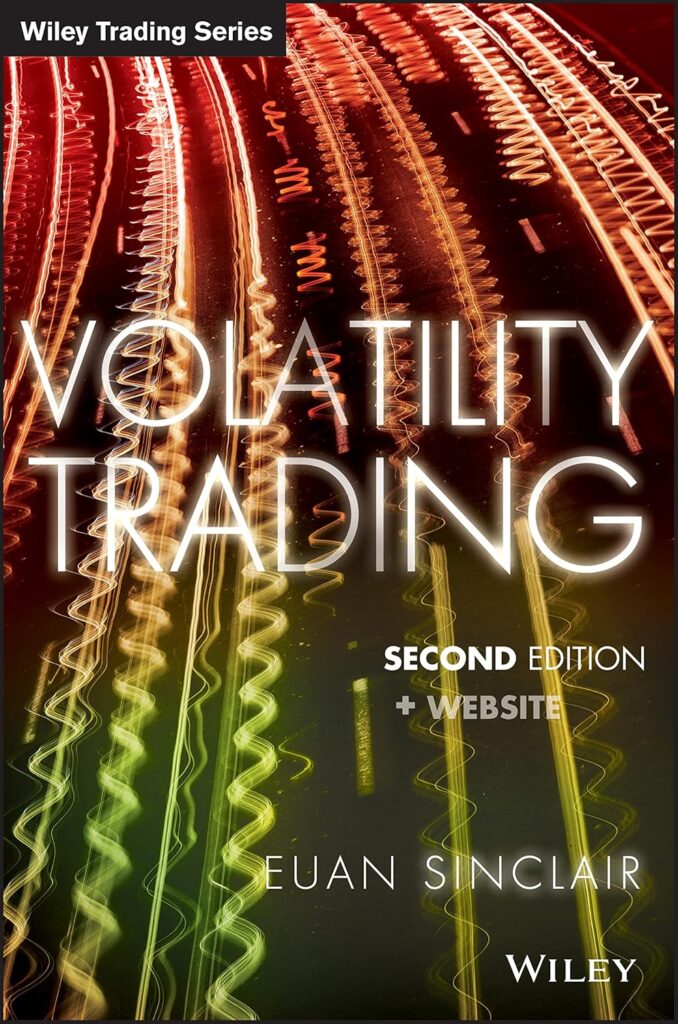
“Volatility Trading” by Euan Sinclair is a highly regarded guide for quant traders and options professionals, focusing on a quantitative approach to trading volatility profitably. Published by Wiley, with the second edition released in 2013, this 224-page hardcover (ISBN: 9781118347133) combines practical trading strategies with theoretical insights, drawing on Sinclair’s extensive experience as a proprietary options trader and his Ph.D. in theoretical physics. The book is aimed at intermediate to advanced traders, particularly those interested in volatility as a tradable asset, and is considered a classic in options trading literature.
Key Features:
- Quantitative Volatility Models: Sinclair provides a framework for measuring and trading volatility, emphasizing quantitative models to gain an edge in options trading. It covers option pricing, volatility measurement, hedging, money management, and trade evaluation, with new chapters in the second edition on:
- Dynamics of realized and implied volatilities.
- Trading the variance premium.
- Using options for special situations in equity markets.
- Practical Trading Focus: The book outlines strategies for defining a statistical edge in volatility trading, stressing the importance of understanding why implied volatility is priced as it is (e.g., due to news, sector trends, or behavioral psychology). Sinclair emphasizes that successful trading requires a coherent philosophy and a rigorous system, with trades clearly expressible in one sentence.
- Behavioral and Psychological Insights: Beyond numbers, Sinclair explores the “human element,” addressing psychological biases that influence trading decisions and how traders can exploit these in markets.
- Real-World Application: Includes practical tools like spreadsheets and simulation engines on the companion CD-ROM/website to forecast volatility and evaluate trades. Sinclair underscores the importance of trade sizing based on projected return and risk, as well as practical considerations like execution software and a comfortable trading environment.
- Accessible Yet Technical: Written with a straightforward style, the book balances complex math with trader-friendly explanations and anecdotes from Sinclair’s 25 years of experience. It’s noted for its humor, a rarity in financial texts, making it engaging despite its technical depth.
Structure and Content:
- Option Pricing Basics: Introduces models like Black-Scholes-Merton (BSM), highlighting assumptions and real-world deviations, such as the mean-reverting nature of implied volatility.
- Volatility Measurement: Explains how to measure historical and implied volatility, with strategies to capitalize on their dynamics, including trading the variance premium.
- Hedging Techniques: Covers delta hedging and other risk management strategies, acknowledging real-world challenges like discrete hedging intervals and market anomalies.
- Money Management: Emphasizes systematic trade sizing (e.g., using the Kelly Criterion) while noting the need to adapt to individual risk tolerance and market nuances.
- Trade Evaluation: Stresses record-keeping to address execution challenges and evaluate performance.
- Special Situations: Discusses using options for events like earnings announcements or market dislocations.
Reception and Critiques:
- Praise:
- Jesper Andreasen (Danske Markets) calls it a “comprehensive and detailed treatment” with a practical, honest style, recommending it for practitioners and academics.
- Aaron Brown (AQR Capital Management) labels it the “classic work on practical options trading,” updated with behavioral finance and risk premium insights.
- Steve Crutchfield (NYSE Euronext) praises its engaging, concise approach and relevance for topics like VIX trading.
- A 2020 review on robotwealth.com highlights Sinclair’s ability to teach a structured trading process, valuable even for non-options traders.
- Readers on Goodreads (16-17 reviews) and Reddit (2023 thread) appreciate its practical insights, with one trader noting its value for dynamic hedging.
- Critiques:
- Some Goodreads reviews criticize the heavy math, suggesting it’s not retail investor-friendly and better suited for quants or professionals. One reader preferred “Timing Volatility” by Steven Place for its simplicity.
- The book assumes prior options knowledge, making it challenging for beginners without familiarity with concepts like the Greeks or BSM.
- Its structure can feel dense, with mathematical sections that may overwhelm non-technical readers, though key points are summarized in plain language.
Additional Details:
- Author Background: Sinclair, with nearly 30 years of trading experience, is a senior financial engineer at Hull Tactical Asset Allocation and former CEO of FactorWave. His work at Bluefin Trading involved quantitative volatility strategies, and he contributes to the Journal of Investment Strategies.
- Target Audience: Best for intermediate to advanced traders, quants, and risk managers. Beginners may need foundational texts like Sinclair’s “Option Trading” first.
- Availability: Available in hardcover ($73-$76), Kindle ($44.99), and PDF/ePUB formats via Wiley, Amazon, Perlego, and others. The companion website/CD-ROM includes volatility forecasting tools.
- Relevance in 2025: A 2024 Reddit thread and 2025 reviews confirm its enduring relevance for volatility trading, particularly for equity derivatives, though some market practices may feel dated.
Why It’s Valuable:
“Volatility Trading” is a cornerstone for traders seeking to master volatility as a tradable asset. Its blend of quantitative rigor, practical strategies, and psychological insights makes it a must-read for serious options traders. The book’s focus on defining a statistical edge, managing risk, and adapting to market realities ensures its utility for professionals, while its humor and anecdotes keep it engaging. However, its technical depth and assumed knowledge make it less accessible for beginners.
If you have questions about specific chapters, strategies (e.g., variance premium trading), or concepts like implied volatility dynamics, let me know, and I can dive deeper! I can also provide additional reviews or resources if needed.
Conclusion: Choosing the Right Book for Your Trading Journey
With a solid lineup of books to choose from, pinpointing the one that best suits your trading needs involves understanding where you currently stand on your trading journey. Absolute beginners might find Jane Doe’s “Options Trading for Beginners 2025” the perfect starting point, while those seeking to deepen their technical chops could lean towards Lisa K.’s insights in “Technical Analysis for Options.”
For traders ready to tackle more complex strategies, John Smith’s “Advanced Options Strategies Explained” stands out, offering a deep dive into advanced tactics. On the emotional front, Emily Zhang’s focus on trading psychology might be the game-changer needed to handle market jitters with newfound calm.
Understanding the often chaotic dance of volatility becomes perfectly manageable with Mark D.’s “Options Volatility and Pricing 2025 Edition,” while mastering the art of minimizing risk is thoroughly covered by Alan P. in “Risk Management in Options Trading.”
Each of these books equips you with unique tools to enhance your options trading arsenal. From mastering the basics to honing advanced strategies and managing your mental and emotional approach, there’s something here for every trader. Remember, the key is not just reading but applying these insights to real-world scenarios, making proactive learning an integral part of your trading repertoire.



